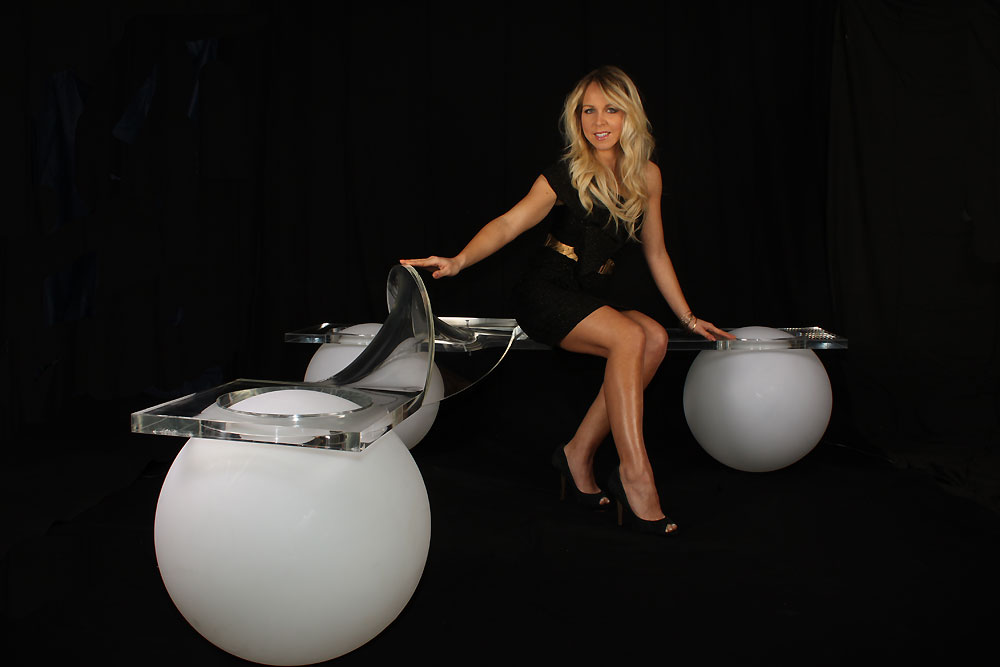
With the furniture being the epicenter of most home aesthetics, innovations in the segment seem to be taking a seemingly colorful, yet minimalistic turn towards the future. Another lighted concept forward in the form of the Glowing light ball bench, who’s lighting would add a complete new dimension to futuristic luxury homes. Designed as a set of 3 glowing glass spheres, there only lies a wooden plank with perforation in them, giving it design some added utility as well. The person behind this creation is Manfred Kielnhofer, who is known to have experimented with what he derived from his observations.
Built in the European nation of Austria, which has its known legacy of great aesthetics in its engineering, the Glowing light ball benches have been created after quite the struggle within the factories which saw of its best craftsmen and design put it idea into practice. Using the rare fabric of plexi-glass, each of these globes first crafted into these unique shapes, which also ensure that the furniture is stable on the ground. The next step involved creating the plywood planks on tops, and then screwing them to these globes at the right position so that users could be comfortably seated on them. After this, TechnikDesign pitched in with the LED lighting system used within the bench, which have the perfect level of brightness, as well as the advantage of not using excess electricity.
But this isn’t the only option that the collection provides. There is another variant which uses transparent Plexiglas top, which have been carved into an aesthetic platform to be fixed on top of the 3 glowing globes. Though we haven’t been told about ideas, but the very design seems to have caught our fancy, simply for the idea of sitting on a transparent plane. Looks like the ideal piece of furniture for the futuristically inclined home, where a sitting area in the living room is the need of the moment.
http://www.bornrich.com
Plexiglas by ThyssenKrupp Plastics Austria
Lucury Furniture Maylan.at
RGB Light technic by TechnikDesign.com
http://kielnhofer.at/blog/
